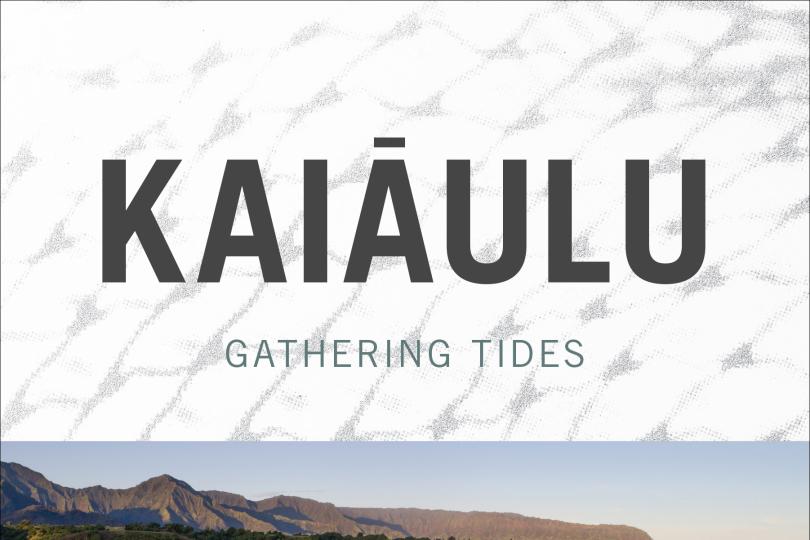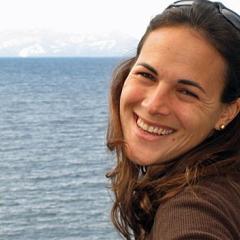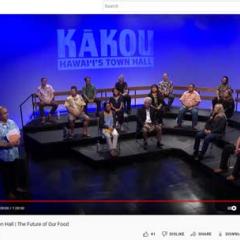Kaiȧulu: Gathering Tides with Mehana Blaich Vaughan
Mehana Blaich Vaughan grew up where the districts of Halele‘a and Ko‘olau meet on the island of Kaua‘i. Her research and teaching focus on community relationships with natural resources, particularly in indigenous settings, as well as place-based education. She is an associate professor at the University of Hawaiʻi at Mānoa in the Department of Natural Resources and Environmental Management in the College of Tropical Agriculture and Human Resources.
In 2018, Mehana published the book Kaiȧulu: Gathering Tides. The book website shares, “building on two decades of interviews with more than sixty Hawaiian elders, leaders, and fishermen and women, Kaiȧulu shares their stories of enduring community efforts to perpetuate kuleana, often translated to mean “rights and responsibilities.” Community actions extend kuleana to include nurturing respectful relationships with resources, guarding and cultivating fishing spots, perpetuating collective harvests and sharing, maintaining connection to family lands, reasserting local governance rooted in ancestral values, and preparing future generations to carry on. An important contribution to scholarship in the fields of natural resource management, geography, Indigenous Studies, and Hawaiian Studies, Kaiȧulu is also a skillfully written and deeply personal tribute to a community based not on ownership, but reciprocity, responsibility, and caring for the places that shape and sustain us all.”
The InCommon Podcast recently interviewed Mehana, exploring the themes and stories illuminated in her book Kaiȧulu: Gathering Tides. The discussion ranges from Mehana’s memories of crafting lei with her grandmother, to receiving her PhD where “she thought she would be writing the book”, to describing kuleana and other related terms that “form a network of understanding for a worldview that is quite different from the dominant bureaucratized, westernized position.” Mehana also talks about the land dispossession that Hawaiians have faced, and how some Hawaiian communities have been trying to reassert their environmental traditions in the context of Hawaiian state bureaucracy.”
Mehana also shares original poetry in the interview: “It’s me grappling with my own kuleana, grappling with going back to graduate school. It became the base of this book even though it’s not in the book. And it gives you examples of the many kinds of kuleana that come with being, say, a throw net fisherman.” (15:22)
The following are some quotes from Mehana in the podcast.
“I was a young person who liked to listen to stories, and liked to listen to elders. Foundational to that was my relationship with my own grandmother, who was a lei maker. Some of my early memories are sitting next to her at her lei table... Feeling very complete in her presence and that there was a lot of learning to be done from watching and from listening.” (3:19)
“In my early professional life… I was part of a community farming project that makes our traditional foods. Every week on Thursdays gathering to make Hawaiian Poi, and sitting with elders there and listening to their stories of where they were when Pearl Harbor was bombed, how the taste of the the taro has changed and the varieties, how they’ve seen fish change, the responsibilities that come with fishing, and just loving those stories. So I think the book came out of a responsibility to share and tell them… In the book I try to share them in the form of a lei, as was the practice of my grandmother and our ohana.” (5:04)
“Kaiȧulu means community. It’s the word for community. It kinda comes from the description of the ocean that surrounds us, being surrounded by community, by ocean as we are in Hawaii, and as community surrounds us in our lives and makes us who we are and shores us up. It’s also the wind of the Waiʻanae coast of the island of Oʻahu, which is not where I’m from, not somewhere I’ve lived, but my first research as an undergraduate was into an effort to Hawaiianize and wrap in community the education system in the local public high school in that majority native hawaiian community. I learned a lot as I was training as a teacher from being there and being outdoors with those students in this Hawaiian studies program, and I wanted to honor that place and the teaching of the elders and community members and teachers there. So I named it for community, and also for the wind of one of the first communities that I got to work with.” (9:54)
“Kuleana is very multifaceted, it has many many aspects to it. In this book, each chapter is a form of kuleana in relation to being a person of a place, a person that is sustained and your family is sustained from that place. Not just getting your food, but all other forms of nourishment, your health, mental health, ecological, education, all of those things really stemming from place, your relationship to it, and your responsibility to care for it. One of the first elders I worked with, … said “kuleana is that which is in your care… because what you care for, whether that be land, or a talent, or knowledge passed on in family, what is yours to care for and how you care for it and share it … helps us know who you are and what we can entrust you with”. So it’s much more than rights and responsibilities, but it’s also the balance of those things and how we carry those forth in our lives and hand them on across generations.” (13:50)


